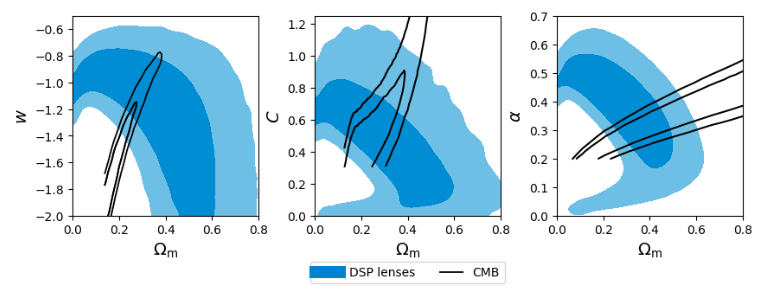Searching for Strong Gravitational Lenses

Strong gravitational lenses occur when a massive object, like a galaxy or cluster of galaxies, bends the light from a more distant object, such as a background galaxy. This bending can create multiple images of the background object, arcs, or even complete Einstein rings. SuGOHI stands for the Strong Gravitational Lenses from the Subaru Hyper Suprime-Cam. It’s a survey aimed at identifying and studying strong gravitational lenses using data from the Hyper Suprime-Cam on the Subaru Telescope. The SuGOHI project uses a variety of methods to identify and analyze strong gravitational lenses, such as visual inspection, citizen science, automated algorithms, data mining and catalog matching, and deep machine learning. By combining these methods, SuGOHI aims to efficiently identify and analyze strong gravitational lenses, contributing to our understanding of the universe’s large-scale structure and the nature of dark matter. SuGOHI database. [Figures from Jaelani+24]
Cosmological Parameter

Gravitational lensing, the phenomenon where light from distant objects is bent by the gravitational fields of intervening objects, can provide valuable information about cosmological parameters. By analyzing lensing effects, scientists can derive several key cosmological parameters, such as: matter density, dark energy density, Hubble constant, curvature, etc. These parameters are essential for understanding the composition, structure, and evolution of the universe. Gravitational lensing provides a powerful tool to probe these aspects because it is sensitive to both the distribution of matter and the geometry of the universe. [Figures from Jaelani+19]
Strong lensing Analysis

Modeling and analyzing strong lensing can yield insights into the distribution of mass in the lensing object, the properties of the background source, and various cosmological parameters. [Figures from Jaelani+20]
Galaxy Cluster/Group Analysis

Cluster lensing analysis refers to studying how galaxy clusters—massive concentrations of galaxies and dark matter—act as gravitational lenses. This analysis provides valuable insights into the mass distribution within these clusters, including both visible (baryonic) and dark matter, as well as cosmological parameters. [Figures from Premadi, Nugroho, & Jaelani, 2021]